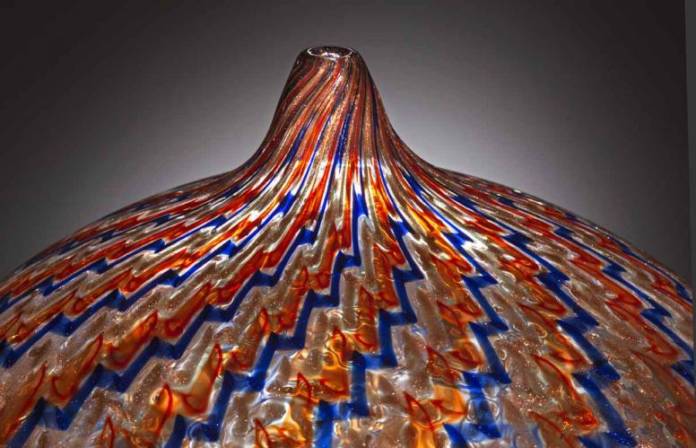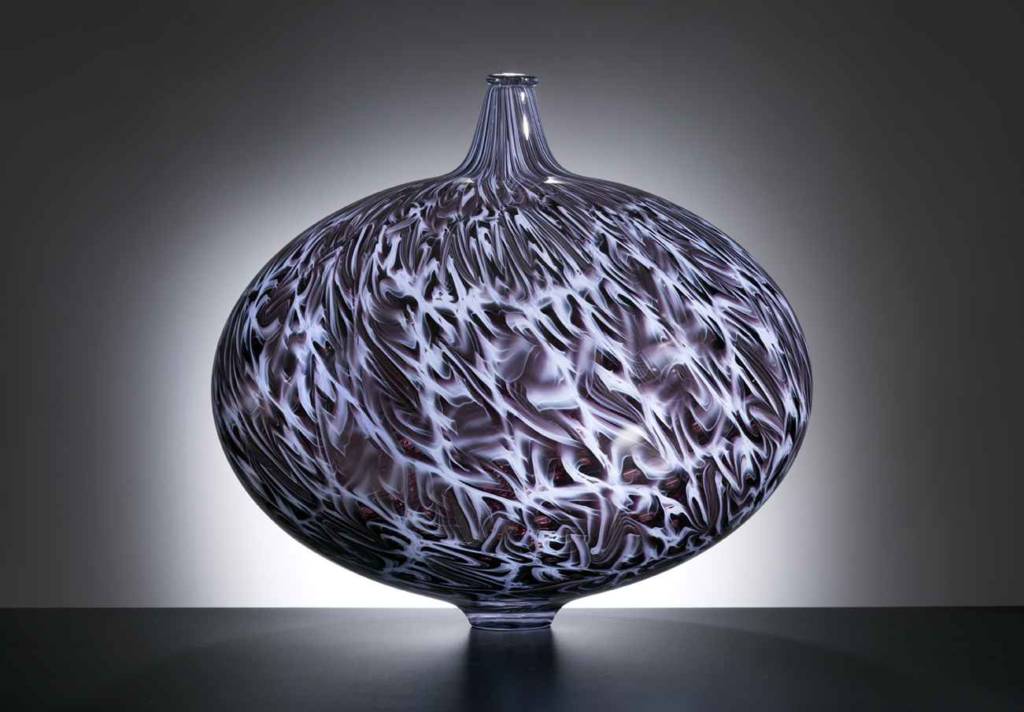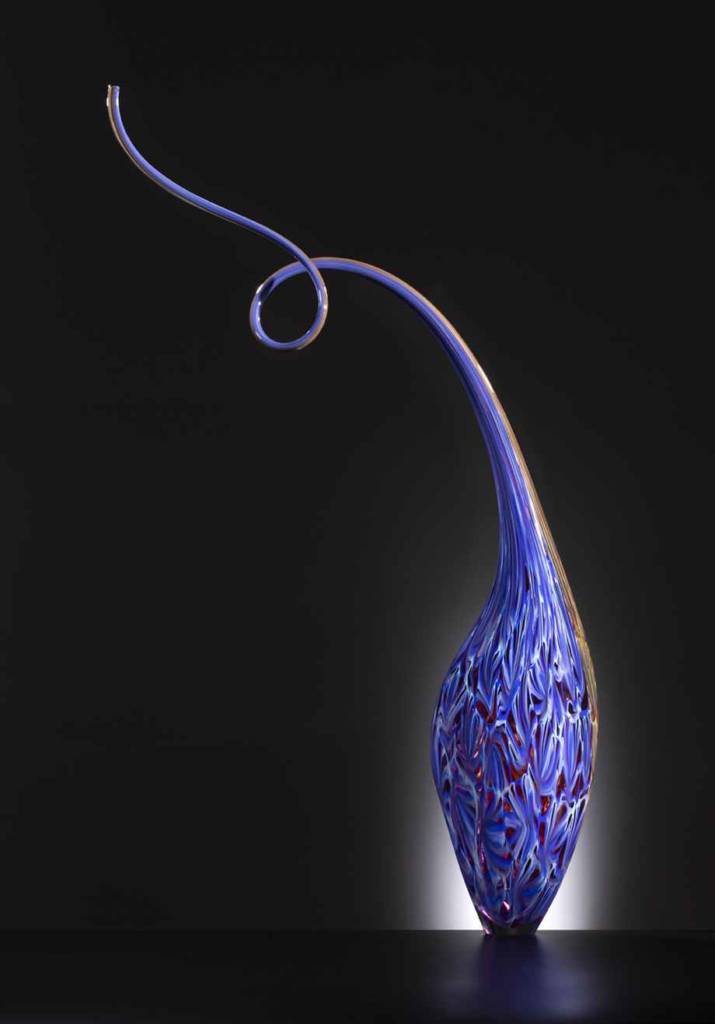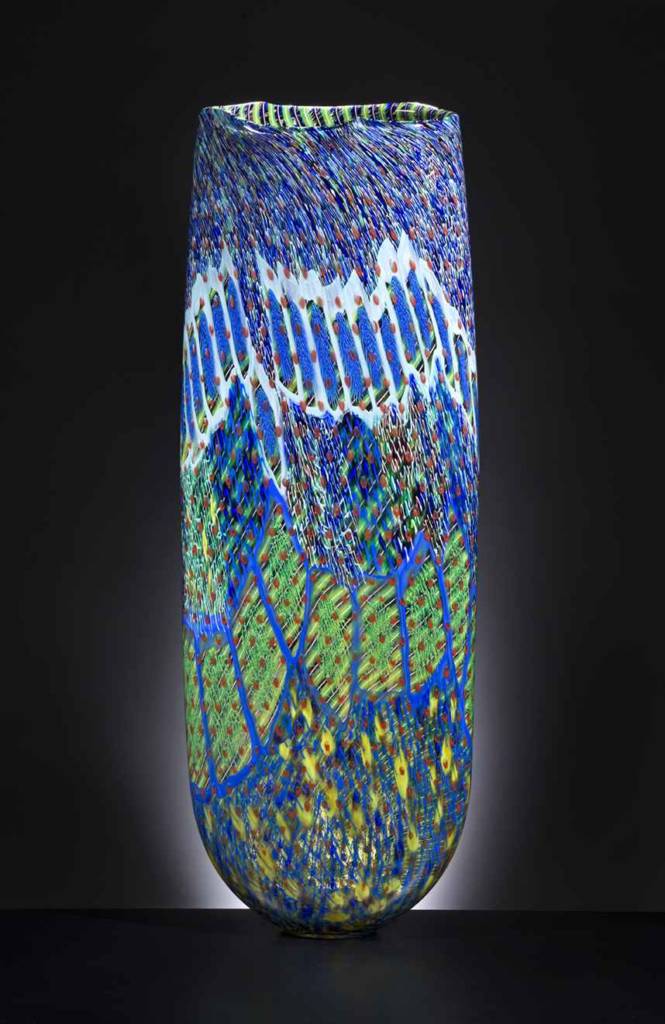
Lino Tagliapietra became an apprentice glassblower in his hometown of Murano, Italy, at 11 years old and was given the title of Maestro when he was 21. He visited Seattle for the first time in the late 70s, and introduced students at the Pilchuck Glass School there to the tradition of Venetian glassblowing.
Tagliapietra, who now splits his time between Seattle and Murano, has had his work exhibited at some of the most prestigious museums in the world, including the de Young Museum of San Francisco, the Victoria and Albert Museum of London, and the Metropolitan Museum of New York.

At 85, Tagliapietra, considered one of the best glassblowers in the world, hasn’t stopped innnovating and trying new things. He’s expanded on traditional glassmaking, experimenting and playing with new forms. When he came to the United States, he saw that ceramics and textiles, considered crafts, were becoming thought of as fine art. He has been pushing that transformation in terms of its perception as fine art with glass.
In a show at San Francisco’s Montague Gallery (through October 13), “Radiance,” you can see in the 22 pieces there, all made in the last two years, his experiments with light and color as well as his series of intricate, gravity-defying sculptures, called Dinosaur.

“Lino’s technical excellence is extraordinary,” said Dani Montague, the owner of the gallery, pointing out some of Tagliapietra intricate work on display. “His artistry and design are superb and his use of color is phenomenal.”
To the artist, the light in San Francisco is special—and he wanted to capture that in the pieces in Radiance.
“San Francisco is like glass – it looks very strong, but there is a fragility too,” he wrote in an email. “There are very few places in the world that have this light—it makes colors dominant.”

After more than seven decades of glassblowing, Tagliapietra says there is always more to learn about his material. The conversation about art and craft that surrounds ceramics and textiles and glass is an ancient one, he says.
“Artisans, the craftsman, can make fantastic pieces. They have the skill to make wonderful pieces. But to be an artist, it is necessary to invent. It is necessary to look into the past and to know the past, and then to push that material to the future,” he wrote.
“You must first be able to do it (this is the craft) but you also must be able to think of how to do it, you must be able to imagine the creation (this is the art). There is a historic discussion of what it means to be an artist—this is an old conversation.”
LINO TAGLIAPIETRA, RADIANCE
Montague Gallery
The show has been extended to October 10
More information here

